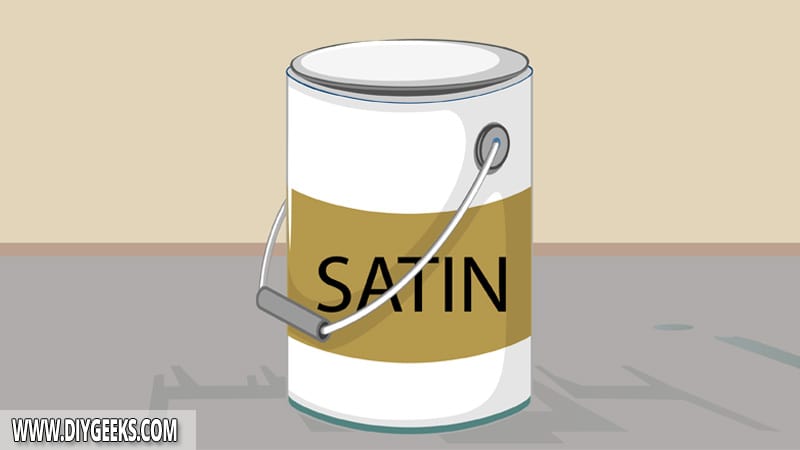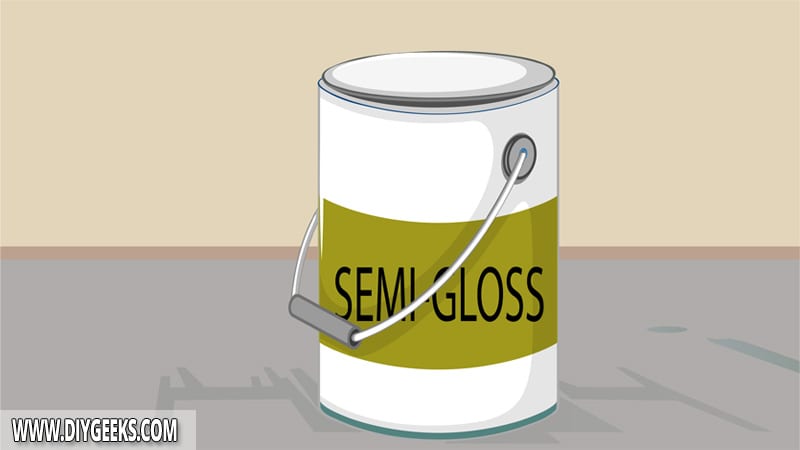Satin polyurethane creates a dry and textured finish because it has a low sheen (gloss) amount. Semi-gloss polyurethane creates a glossy finish that reflects light and highlights surface imperfections.
Satin polyurethane dries faster, has less sheen (gloss), and is easier to clean and maintain than semi-gloss polyurethane. Semi-gloss polyurethane is more durable and scratch-resistant than satin polyurethane.
The main difference between satin and semi-gloss polyurethane is the sheen (gloss) amount on the formula. The higher the sheen, the more glossy the finish is and the longer it takes it to dry.
What is Satin Polyurethane?

Satin polyurethane is a protective coating with a low sheen (or gloss) on its formula. The satin sheen creates a dry textured protective finish that doesn’t reveal (or highlight) surface imperfections or scratches.
Satin polyurethane is available in both, water-based and oil-based formulas. It’s an ideal finish for floor surfaces that are exposed to high foot traffic.
What is Semi-Gloss Polyurethane?

Semi-gloss polyurethane is a protective coating with a moderate level of sheen. It creates a glossy finish that reflects light and highlights the surface imperfections or damages.
Its sheen amount increases its dry time, but this makes its finish more durable and protective as the particles have more time to harden and compact.
Semi-Gloss vs Satin Polyurethane
The differences between satin and semi-gloss polyurethane are listed below.
Paint Formula
Satin and semi-gloss polyurethane have a similar formula, but semi-gloss polyurethane has more sheen (or gloss), while satin polyurethane has more flattening agent.
Dry-Time
Satin polyurethane dries faster than semi-gloss polyurethane because it has less sheen and oils, so the additives evaporate and dry faster.
Semi-gloss polyurethane takes longer to dry as it has more sheen on its formula that takes longer to evaporate, and its finish takes longer to become hard (rigid).
The Sheen
Satin polyurethane has less sheen (or gloss) than semi-gloss polyurethane. The higher the sheen amount, the more reflective and glossy the finish is.
The lower the sheen amount, the more dry and textured the finish is.
The Appearance
Satin polyurethane has a dry textured finish, while semi-gloss polyurethane has a glossy and reflective finish.
Cleaning and Maintenance
Satin polyurethane is easier to clean and maintain than semi-gloss polyurethane as it hides dirt and stains better and doesn’t need much cleaning.
Semi-gloss polyurethane is harder to maintain as its reflective finish highlights imperfections, dirt, and dust on the surface.
Durability
Semi-gloss polyurethane is more durable than satin polyurethane as it produces a glossy finish has better moisture-resistance and takes longer to dry giving particles more time to harden and compact.
Scratch Resistance
Semi-gloss polyurethane is more scratch-resistant than satin polyurethane as its glossy finish prevents scratch marks. However, semi-gloss polyurethane highlights scratches more if they do occur.
Cost
Semi-gloss and satin polyurethane have a similar price tag, depending on the brand.
Frequently Asked Questions
Can You Mix Satin and Semi-Gloss Polyurethane?
You can mix satin and semi-gloss polyurethane if they have the same base or solvent (water or oil-based). You can’t mix them if they have a different base or solvent.
Can You Apply Satin Polyurethane over Semi-Gloss Polyurethane?
You can apply satin polyurethane over semi-gloss polyurethane if you sand the finish to remove its glossy layer (barrier).
You can apply semi-gloss polyurethane directly over satin polyurethane.


